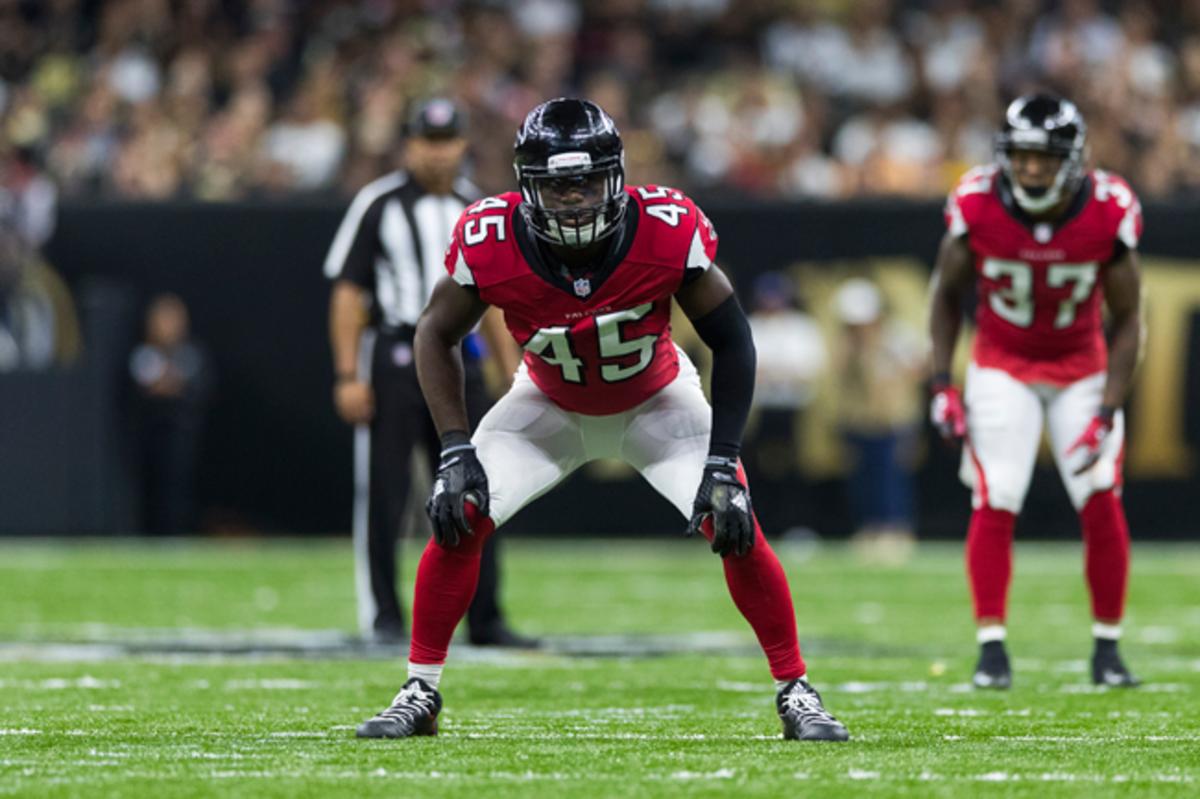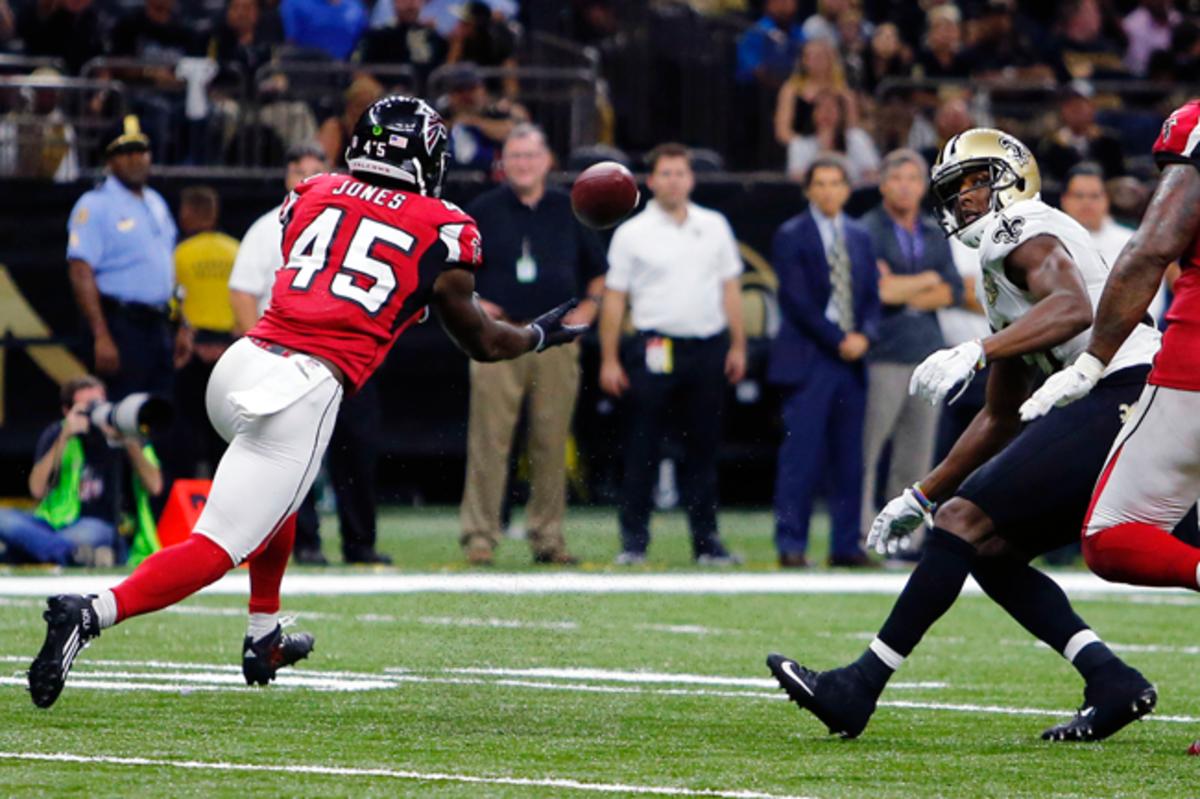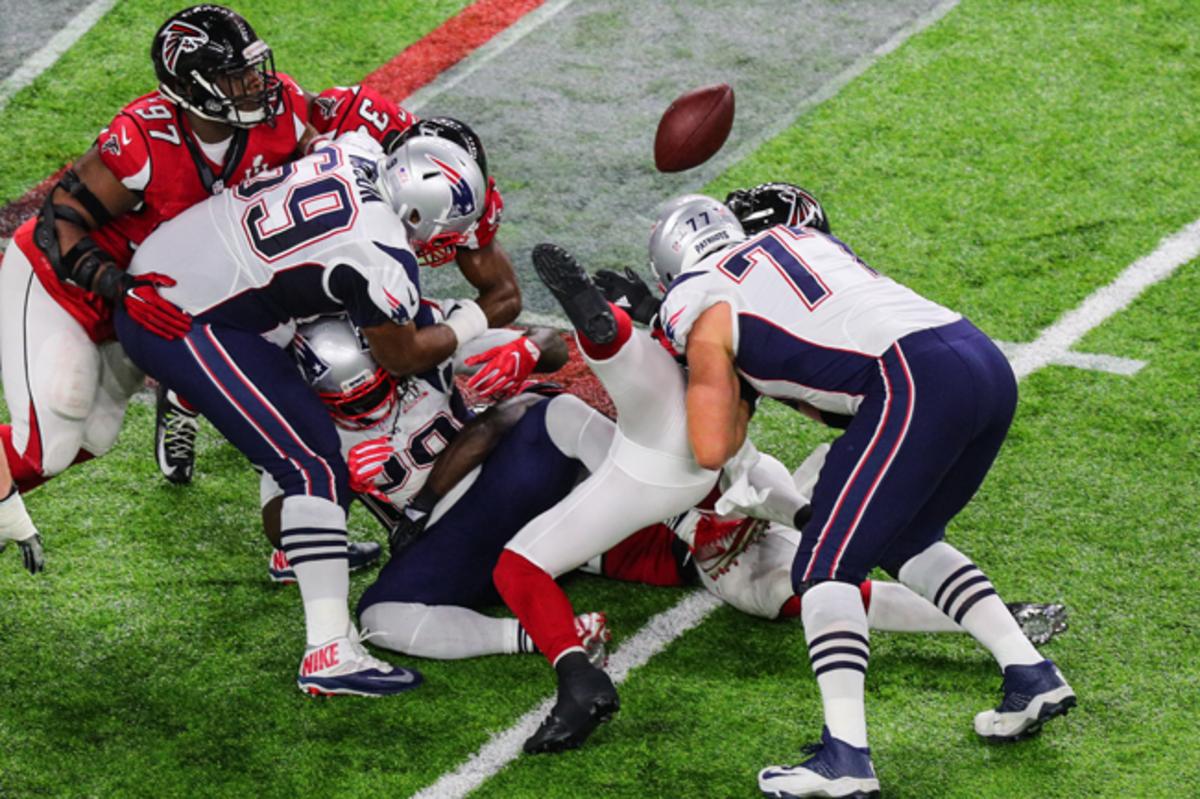The Ideal Modern Linebacker

The first time Jeff Ulbrich saw Deion Jones in person was at the 2016 NFL combine. Jones, a linebacker from LSU, went through the drills a little different from his peers. He would sprint, Ulbrich noticed, through the exercise and then keep going an extra five to 10 yards without slowing down. Ulbrich had seen the same thing watching Jones’s game tape: the way he raced to the ball with such urgency, as if getting there fulfilled some basic biological need.
If not for that relentless hustle, it may have been easy to overlook Jones. Average in height (6’ 1”) and a bit of a lightweight (only 222 pounds), he wasn’t a traditional linebacker prospect—and he had started only one year at LSU. But he possessed one elite trait: speed. He ran the 40 in 4.38 seconds at his pro day, which is on par with running backs and exceptional for a linebacker. And Jones had that hustle, that urgency about the way he played, which was impressive but hard to quantify. Because of the uncertainty, some pundits projected that he would fall to the third round.
But Ulbrich, the Falcons’ linebackers coach, had a role for Jones in mind. Atlanta was entering Year 2 under coach Dan Quinn, who was still in the midst of remaking the defense into a younger, faster unit. Ulbrich and Quinn imagined putting Jones in the heart of their defense, at middle linebacker. They envisioned using his speed to cover tight ends and running backs in the passing game, and to race after ballcarriers, sideline to sideline, in the running game. The Falcons thought he was a perfect fit for the modern NFL, in which offenses try to spread the field and exploit mismatches. In that sense, Jones was perhaps the ideal linebacker for the modern NFL.
When Ulbrich met with Jones at the combine, he told him as much. “You’re going to give football a chance to survive, the essence of it,” Ulbrich said.
Jones flashed “a big, goofy smile,” Ulbrich says, and shrugged off the praise. Nevertheless, the Falcons were determined to draft him. “I’m not sure anybody else was going to take him as early as we were,” says Falcons’ president Rich McKay. “They gave him a grade that meant he was going to be a Falcon.” The Falcons picked Jones in the second round, No. 52 over all. Nine months later, he was starting at middle linebacker in the Super Bowl.
* * *

Soon after Jones was drafted, he received a text from Paul Worrilow, the Falcons’ incumbent middle linebacker: If you need anything, let me know. Worrilow had gone undrafted himself, in 2012, and had worked his way up the depth chart to become a starter. He was an overachiever who had led the Falcons in tackles each of the last three years. But he was also a holdover from the previous coaching staff, and by helping Jones he knew he could be jeopardizing his own job security. He did it anyway.
At the time, Jones needed all the help he could get. While he looked the part of the modern linebacker, he still needed to learn how to play the role, mentally. When Jones arrived at training camp, Ulbrich says, “He had no idea how to watch tape. He had no idea how to get his body right. He had no idea about the Xs and Os. He had no idea about the speed of the game.” He struggled at times just getting the defense set up correctly.
So Jones wisely took Worrilow up on his offer. He started arriving at the complex at same time as Worrilow, about 90 minutes before everyone else. He shadowed Worrilow’s morning routine. He sat next to Worrilow in position meetings. Jones was usually biting his nails or gnawing on the side of his hand, a nervous tic he picked up while trying to learn the playbook. Ulbrich would hit the back of his head. “Stop eating your hands!”
• PETER KING: The Hunt for Carson Wentz and Father’s Day Book Recommendations
The Falcons were toying with the idea of starting two rookie linebackers—Jones and fourth-rounder De’Vondre Campbell—and it was Ulbrich’s job to bring them up to speed. He often put the two rookies through more reps than the others. For example, the Falcons have one drill they call “Mama,” which involves a large metal structure that almost looks like a cage. The ’backers take turns running through the cage, working on their footwork while creating the muscle memory to stay low. “We call it Mama,” veteran linebacker Sean Weatherspoon says, “because Mama gets you right.” If they stand up or get too high they’ll hit their head on the metal. After everyone had his turn going through “Mama,” Ulbrich made Jones and Campbell go through again.
“[Deion] had a look on his face like, this is some bullshit,” Weatherspoon says, cracking up. “It was like they were getting whipped like a horse. Like, get in there!”
By the time the season started, Jones and Campbell were starters. Early on, Campbell suffered ankle injury that kept him out for four games, but Jones flashed his potential. He had 10 tackles in a win over the Raiders. In his hometown, New Orleans, he made a 90-yard pick-six off Drew Brees to beat the Saints. He intercepted Philip Rivers, too. Thanks to the Falcons’ high-powered offense, they were playing in a lot of high-scoring games, which meant opposing teams were passing a lot, which allowed Jones to use his speed and play to his strengths.

But to the trained eye—and to Ulbrich’s especially—Jones was still a work in progress. He had a habit of freelancing at times, and he would struggle getting off a block. He wasn’t always vocal enough before the snap, either. He was still making rookie mistakes. “I might tell them, this particular motion means this,” Ulbrich says. “I might say it 20 times. But not until it happens and they get beat [in a game] do they really say, ‘Ohhh, gotcha, I know what you mean.’ ”
Those rookie issues finally came to the forefront in Week 10, against the Eagles. The Falcons were finally in a close, low-scoring game. Philadelphia committed to the ground game and kept going right at the Falcons’ undersized middle linebacker. The Eagles ran the ball 38 times for 208 yards and two touchdowns, and they won, 24-15. The loss dropped the Falcons to 6-4. “That game was an eye-opener for [Deion],” Ulbrich says. “He got pushed around a little bit.”
• 24 HOURS: With L.A. Rams Coach Sean McVay
During the Falcons’ ensuing bye week, Quinn and Ulbrich made a point to meet with Jones and Campbell. Their message to the rookies: be more confident, more vocal and more assertive on the field. “At first, we were timid,” Campbell says. “We didn’t know what to expect. We didn’t want to come in and take over. But that’s what our coaches were expecting of us. Hey, you’ve got to show these guys that you can command a defense, that you can run a defense. Then they will respect you and look up to you.”
After that, Worrilow says, “[Deion’s] preparation. The level of effort in practice . . . the details in his notes. His interaction during game planning. It all took a step.” Behind Jones’s inspired play, the Falcons won five of their last six games and earned the No. 2 seed in the NFC. Jones finished the season with 108 tackles (the most among rookies), 14 passes defended (tied for third-most among rookies), and three interceptions (the most among rookies). It was a stat line that perfectly encompassed everything it took to play middle linebacker in 2016.
* * *

Early in the second quarter of Super Bowl 51, the game still scoreless, Deion Jones made the first impact play of the night. The Patriots, on first down at the Falcons’ 33-yard line, spread the field wide, with three receivers and one tight end, and ran LeGarrette Blount off left tackle—right at Jones. As the play developed, the 222-pound Jones met Joe Thuney and discarded the Patriots’ 305-pound guard with an extended arm, and then he headed toward the 250-pound running back, who had lowered his head and was fighting through a crowd for extra yards. Jones collided with Blount and held him up for a moment, and then Jones ripped the ball out and sent it flying into the air. The Falcons recovered the fumble and snatched the momentum.
Everyone knows how the second half played out. The Patriots came back from a 25-point deficit, partly because they wore out the Falcons’ young, fast defense. But for a moment in the second quarter, Jones was the one who got the Falcons going, when he shed a block and wrestled the ball from one of the most punishing backs in football.
“How about the rookie,” Joe Buck marveled on the telecast.
* * *
As the Falcons open minicamp, there’s no doubt about who is calling the shots in the middle of their defense. They trust Jones so much, in fact, they’ve given him a protégé to groom. This offseason, the Falcons let Worrilow leave in free agency and drafted another linebacker in the third round—Duke Riley, the player who took Jones’ place at LSU. Just like Jones, Riley was also a one-year starter in college who was a little undersized but known for his speed. At the combine, he finished in the top five among all the linebackers in the 20-yard shuttle (4.21), the 40-yard dash (4.58), and three-cone drill (6.89).
The Falcons, naturally, are already excited about pairing him with Jones, his near clone and the ideal modern linebacker. “The toughness, the speed that [Duke] plays with fits terrifically into our style,” Quinn says. “We clearly know how to feature him in that role.”
Question? Comment? Story idea? Let us know at talkback@themmqb.com
